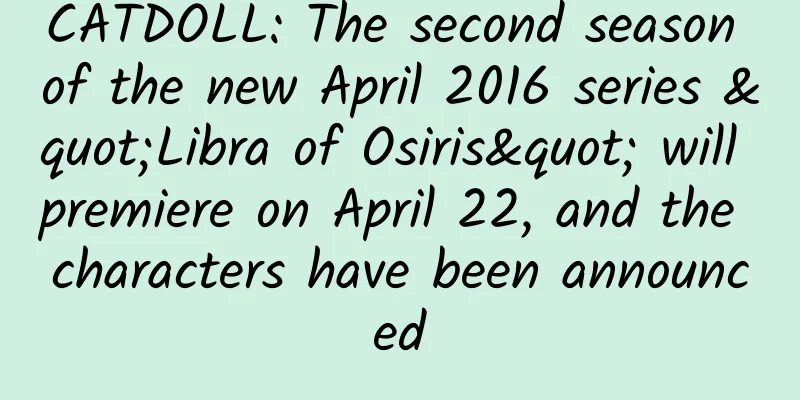CATDOLL: Japanese anime has entered a difficult period in China. How should we deal with it?

|
Recently, the Ministry of Culture has issued a rectification order for animation programs, which has caused a lot of controversy. Many well-known Japanese animations have been affected. Animation researcher Guan Zhong Afu said that Japanese animation has been popular in China for 35 years. The cartoons introduced in the early years are not only popular among children, but also positively evaluated by parents and academic circles. The Ministry of Culture issued a rectification order this time, on the one hand, to cope with the new situation of Internet communication, and on the other hand, it is also the inevitable result of having no law to rely on but having to do nothing when the mechanism and system are not sound. Japanese animation hits rock On March 31, the Ministry of Culture issued the "23rd Batch of Illegal and Irregular Internet Cultural Activities Investigation List", and many animation video websites were ordered to rectify. Among them, three Japanese animations were criticized by name: "Tokyo Resonance" represents violent and terrorist content, promoting the idea of "fighting violence with violence"; "Blood-C" has horrific and bloody scenes that make people extremely uncomfortable; "High School of the Dead" attracts attention with pornographic elements, which clearly violates the bottom line of social morality and public order and good customs. On April 13, an article titled "The Ministry of Culture's first list of violent and terrorist animations to be removed from shelves on April 16" circulated on the Internet, and One Piece, Naruto, Detective Conan, etc. were all affected. Later, when responding to this, the relevant person in charge of the Ministry of Culture did not deny its authenticity, but only said that the official list would be announced later. On April 19, the program "Rule of Law in Progress" broadcast by the Science and Education Channel of Beijing Television criticized "Detective Conan" and said: "For children, the harm caused by some cartoons is even more shocking, and violent and bloody plots are repeatedly exaggerated. They are using the banner of cartoons, but in fact they are a blatant textbook of crime." After the program was broadcast, it caused a huge uproar, pushing Japanese cartoons to the forefront again. 35 years of ups and downs In 1980, CCTV imported Osamu Tezuka's famous cartoon "Astro Boy" from Japan, which was the first time that foreign cartoons were introduced to China. Since then, Japanese cartoons, as the main force of imported cartoons, have firmly occupied half of the animation time slots in mainland China. In the early years, Japanese cartoons such as "The Clever Ikki", "Selected World Fairy Tales", "Three Thousand Miles in Search of Mother", and "Mimi's Wanderings" played an indispensable role in promoting the main theme and conveying positive energy. For this reason, before the mid-1990s, the then Ministry of Radio, Film, and Television and later the State Administration of Radio, Film, and Television did not introduce corresponding regulatory measures for Japanese cartoons. However, around 1995, with the rise of satellite TV, cable TV and educational TV stations, the import of imported cartoons became rampant. Cartoon imports were not subject to review and quota restrictions, and some Japanese cartoons with prominent violent tendencies frequently appeared on Chinese TV screens. Among them, the most influential "Fist of the North Star" was broadcast on local TV stations, and its "blood and flesh flying, facial features moving" scenes made many people "stunned". Subsequently, the film was urgently stopped, but "the impact of the adult tendency of Japanese cartoons on Chinese teenagers" began to become a hot topic in society. It was in this context that the State Administration of Radio, Film, and Television issued the "Notice on Strengthening the Management of the Import and Broadcasting of Cartoons" in March 2000. The "Notice" requires that the proportion of imported cartoons in children's programs broadcast by each TV station at all levels should not exceed 25%, and the proportion of imported cartoons in the total broadcast of cartoons should not exceed 40%. This is also the first time that the State Administration of Radio, Film, and Television has made clear regulations on the introduction and broadcast of imported cartoons. Around 2006, negative comments about imported cartoons, especially Japanese cartoons, were once again rampant, and the domestic animation industry had many complaints about them - some Japanese cartoons, in order to promote their animation brands, did not hesitate to provide related cartoons to mainland TV stations for free or at very low prices, which made it difficult for some domestic animation companies to survive. Driven by this force, the State Administration of Radio, Film and Television issued two consecutive "ban orders", requiring all TV stations not to broadcast imported cartoons during prime time every evening. This ban has promoted the development of domestic cartoons to a certain extent. In order to avoid "gaps" in cartoon time slots, TV stations across the country have increased their purchases from domestic animation production companies. The unspeakable secret of “one size fits all” In fact, with the lack of a sound mechanism and system, the "one-size-fits-all" approach to Japanese animation is a helpless move by the competent authorities. After all, there is no timetable for the implementation of film ratings, and animation ratings are even less operational. However, some Japanese cartoons involving pornography and violence have indeed caused a considerable negative impact on some minors. At the same time, the direct promoter of this attack on Japanese animation is the Ministry of Culture rather than the State Administration of Radio, Film and Television. The change of the competent department has actually highlighted the "big difference" in the market situation. The rise of high-definition video on demand and the popularity of mobile Internet have made the traditional competent departments somewhat "out of reach". At the same time, in the offensive and defensive battle against Japanese animation, the TV screen is no longer the main battlefield. However, the positive transformation and repositioning of the functions and roles of government departments still cannot make a difference in resolving the differences among the parties. This helpless move is the inevitable result of having no law to rely on and having no choice but to do nothing at this stage. What can we do before grading? The release of the "removal list" and the unilateral accusation against "Conan" have led many people to join the team supporting the call for the introduction of a rating system. However, with the diversification of today's screening channels, can the rating system become a "Prozac"? I'm afraid not. Labeling Japanese cartoons with different labels cannot effectively minimize the negative impact of overly adult content. Just like promoting the development and reform of football, taking some flexible and pragmatic approaches before the implementation of the grading system may achieve twice the result with half the effort. Many foreign experiences have proved that under the current circumstances, we still have many options: 1. When the United States introduced Japanese cartoons such as "Macross", it made necessary deletions to the nude and bloody scenes. 2. When some countries broadcast cartoons, there will be a subtitle prompting "Please watch the following programs under the guidance of parents." 3. When the public service film produced by UNICEF about the Smurfs' village being bombed was broadcast in the Netherlands, it was only broadcast at night when the children fell asleep. |
<<: CATDOLL: Disney encounters a major change in Japanese comics. Can you accept this style?
Recommend
CATDOLL: The promotional images, staff and CV of "The Heroic Tale of the Fallen Knight" are all exposed
The fantasy light novel series "The Heroic T...
CATDOLL: "Momo and Oguri LoveLove Story" announces the protagonist's voice actor
The love manga "Momo Oguri LoveLove Monogata...
CATDOLL: Netizens voted for the most infuriating animations after watching them. Even sending knives to someone is not enough.
Japan releases a lot of animations every year. So...
CATDOLL: July new show "Vampire Servant" PV released
The vampire-themed manga "Vampire Servant&qu...
CATDOLL: Is it Vegeta's fault that Bulma's breasts shrank in Dragon Ball Super?
In episode 31 of Dragon Ball Super, Jack and Bulm...
CATDOLL: The original novel of "Re:Zero -Starting Life in Another World" has sold over 1.5 million copies
The April anime "Re:Zero -Starting Life in A...
CATDOLL: "Naruto" live-action stage play, all the cast members are running wild, Sasuke and Naruto are in a gay relationship, and they use cheats
The Naruto stage play that was announced some tim...
CATDOLL: Japanese netizens voted for the strongest Hokage of Konoha, Kakashi, whose strength was questioned
There are so many strong people in the manga &quo...
CATDOLL: The preview image of the 10th episode of "Spring and Summer Mystery Case Files" has been released
The advance pictures of the 10th episode of the n...
CATDOLL:
...
CATDOLL: Anime Starry Sky Evening News: "JoJo's Bizarre Adventure" live-action movie cast revealed, anime "Erotic Manga Teacher" voice actors revealed
Good evening, everyone. Let's take a look at ...
CATDOLL: Netizens hotly debate: What kind of animation can be called meaningful?
Nowadays, a large number of animations are broadc...
CATDOLL: "DOG DAYS" BD/DVD Volume 1 Promotional CM Released
The animation "DOG DAYS" which has been...
CATDOLL: The new Pokémon in the movie "Pokemon" were revealed to be man-made 500 years ago?
The new Pokémon 2016 movie will be released on Ju...
CATDOLL: The mysterious historical original text of One Piece comic 818 advance picture is revealed
As Luffy and his friends meet the legendary ninja...









